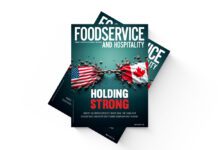TORONTO — The recent Fall Economic Statement was a missed opportunity by the federal government to build on the positive momentum the GST and HST holiday tax break has generated for the foodservice industry.
The GST and HST holiday tax break provides much needed temporary relief for restaurants, which have been battered by rising costs and low consumer demand over the past year. Restaurants Canada’s chief economist conservatively estimates the tax break will generate an additional $1.5 billion in sales for the restaurant industry. This influx of cash is especially important during the usually slow January and February period. It will allow restaurants to pay down debt, give their hourly staff more hours and invest in wages.
But restaurants need more long-term measures that address their labour and affordability concerns and create a promising economic environment for them to grow.
Labour shortages will continue to challenge the foodservice industry in 2025. Restaurants Canada continues to call on the federal government for a comprehensive plan to address labour shortages and tap into Canada’s existing labour pool in the wake of major changes to the immigration system. There are currently 78,000 vacant jobs across our industry. It was disappointing to see no movement on this file in the Fall Economic Statement.
Nearly one million unemployed newcomers currently hold open work permits in Canada. These newcomers face significant barriers to employment and Restaurants Canada has been advocating for a matching and training program to connect them with jobs in industries like foodservice, particularly in regions outside the major metropolitan centres supporting remote, rural and tourist communities. The company is also asking the government to work with the foodservice industry on strategies to attract more Canadian workers, especially youth.
Long-term solutions to the rising cost of doing business are also needed. Bankruptcies in the industry increased by 45 per cent in the first eight months of 2024 compared to the same period in 2023. In fact, 53 per cent of restaurants are operating at a loss or barely breaking even. At the same time, total food costs increased by 25 per cent, insurance by 24 per cent, utilities by 20 per cent and labour costs by 18 per cent. With profit margins typically between three and five per cent, it has been hard for operators to absorb these cost increases.
The federal government can provide long-term relief to our industry and to the 1.2 million workers we employ by reducing Employment Insurance payroll taxes by two per cent. In fact, nearly eight in 10 Canadians (77 per cent) said they would benefit from government reducing payroll taxes in a recent public opinion poll conducted by spark*insights on behalf of Restaurants Canada.
“Restaurants Canada will continue to advocate for these and other measures with all political parties in 2025 and push them to do the right thing for our industry as they prepare their political platforms,” says Kelly Higginson, president & CEO, Restaurants Canada.


















